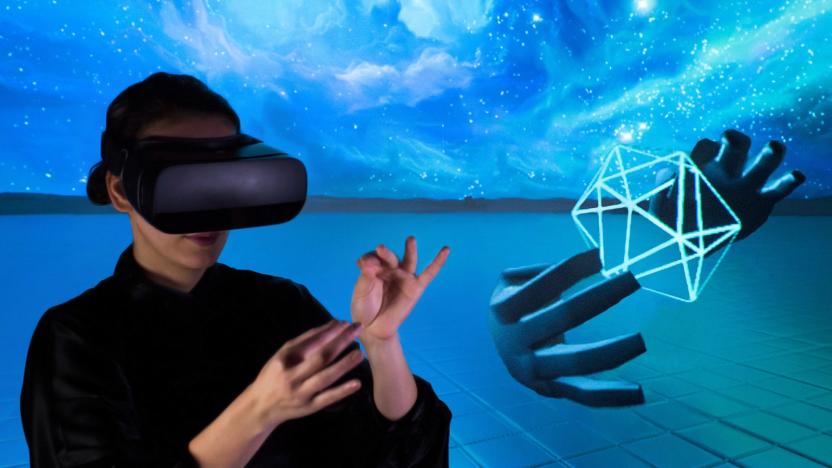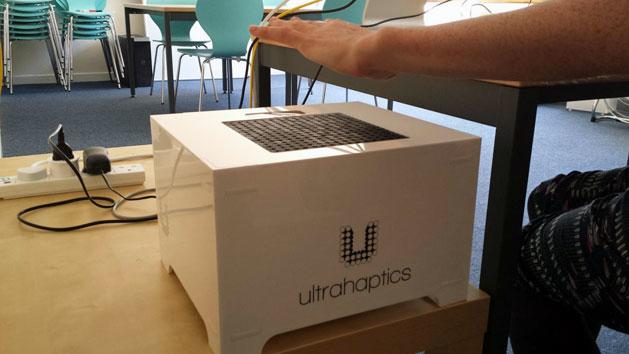ultrahaptics
Latest

VR pioneer Leap Motion reportedly sells to UltraHaptics for $30 million
VR/AR startup Leap Motion has been sold to a rival business named UltraHaptics, according to the Wall Street Journal. The price for the company was reportedly around $30 million -- it was said to be valued at ten times as much in 2013.

This box transmits emotions to your hand
This slightly unwieldy looking machine can apparently deliver emotions to your hand through "mid-air haptics", pinpointing areas on your palm that are attuned to certain emotions, and stimulating them. A study from the University Of Sussex used an Ultrahaptics system to communicate emotions between test groups, with the haptic group stating significantly higher stimulation compared to a test group that was only shown a picture. (Mere optical stimulation? Pssch.) Dr Marianna Obrist, Lecturer at the Department of Informatics, has apparently figured out that stimulating different areas of the hand conveys different things: hot bursts of air to the area around the thumb, index finger and middle part of the palm generate excitement, while sad feelings can be delivered by slow and moderate stimulation on the outer palm and areas around the little finger.

Researchers laugh in the face of flatness with new approaches to haptic displays (video)
If the future of haptic technology is your jam, then the symposium on User Interface Systems and Technology at the University of St. Andrews is the place to be this week. Teams from Disney Research and the University of Bristol will present two different approaches to adding 3D tactility to touch technology, and the results are pretty fascinating. While incorporating haptic feedback into displays isn't unheard of, adapting it to live content has been a challenge. At Disney, researchers developed an algorithm that can translate information culled from depth maps of virtual surfaces into dynamic tactile experiences. Through the magic of electrovibrations, the team was able to simulate changes in texture as a finger slid across a flat surface displaying both static imagery and live video. The group from Bristol opted for a different strategy; instead of vibrations produced by electricity, their UltraHaptics system relies on ultrasound speakers embedded behind a display used in conjunction with a Leap Motion controller. Basically, high-frequency sound waves produce an invisible field that creates a sensation of texture without the user having to touch the screen at all. Interest piqued? Check out videos of both systems in action after the break.


